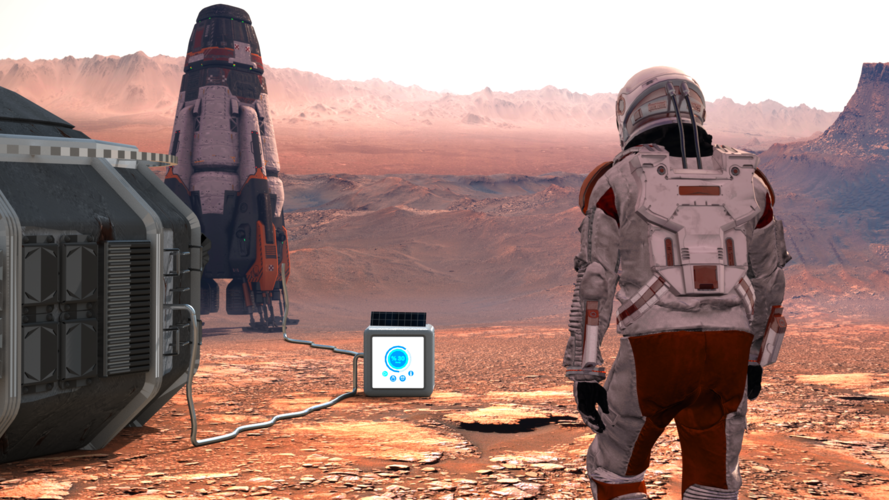
Copernical Team
Vast and SpaceX to launch two human spaceflight missions to ISS
 Vast has announced an agreement with SpaceX to conduct two human spaceflight missions to the International Space Station (ISS) using SpaceX's Falcon 9 rocket and Dragon spacecraft. The missions, dependent on NASA's selection of Vast for private astronaut missions (PAM), will mark the fifth and sixth PAMs ever awarded by NASA, further positioning Vast as a key player in commercial space explorati
Vast has announced an agreement with SpaceX to conduct two human spaceflight missions to the International Space Station (ISS) using SpaceX's Falcon 9 rocket and Dragon spacecraft. The missions, dependent on NASA's selection of Vast for private astronaut missions (PAM), will mark the fifth and sixth PAMs ever awarded by NASA, further positioning Vast as a key player in commercial space explorati SpaceX scrubs launch from Florida, but one lifts off from California
 One of two scheduled Falcon 9 rocket launches lifted off early Saturday with one going up in California but aborted in Florida.
The launch of four Astranis satellites from Cape Canaveral Space Force Station originally was scheduled for about midnight Friday, with backup opportunities until 2:28 a.m. But just as the rocket's nine engines fired, SpaceX officials announced that it would be
One of two scheduled Falcon 9 rocket launches lifted off early Saturday with one going up in California but aborted in Florida.
The launch of four Astranis satellites from Cape Canaveral Space Force Station originally was scheduled for about midnight Friday, with backup opportunities until 2:28 a.m. But just as the rocket's nine engines fired, SpaceX officials announced that it would be NASA cameras to capture interaction between Blue Ghost lander, moon's surface
This request seems a bit unusual, so we need to confirm that you're human. Please press and hold the button until it turns completely green. Thank you for your cooperation!
Press and hold the button
If you believe this is an error, please contact our support team.
185.132.36.159 : c417a1a3-45c6-4cca-bd29-717d1f0d
Report analyzes long history of NASA support for commercial space
This request seems a bit unusual, so we need to confirm that you're human. Please press and hold the button until it turns completely green. Thank you for your cooperation!
Press and hold the button
If you believe this is an error, please contact our support team.
185.132.36.159 : 6719a027-c2eb-4b3b-bab4-1261a454
Gateway: Wired for deep space
This request seems a bit unusual, so we need to confirm that you're human. Please press and hold the button until it turns completely green. Thank you for your cooperation!
Press and hold the button
If you believe this is an error, please contact our support team.
185.132.36.159 : dc3a9872-5b2e-48d9-8793-ec77a0b5
ESA 2025: A fifty-years legacy of building the future
 Video:
00:10:27
Video:
00:10:27
In 1975, 10 European countries came together with a vision to collaborate on key space activities: science and astronomy, launch capabilities and space applications: the European Space Agency, ESA, was born.
In 2025, we mark half a century of joint European achievement – filled with firsts and breakthroughs in science, exploration and technology, and the space infrastructure and economy that power Europe today.
During the past five decades ESA has grown, developing ever bolder and bigger projects and adding more Member States, with Slovenia joining as the latest full Member State in January.
We’ll also celebrate the 50th anniversary of ESA’s
ESA and NASA deliver first joint picture of Greenland Ice Sheet melting

Global warming is driving the rapid melting of the Greenland Ice Sheet, contributing to global sea level rise and disrupting weather patterns worldwide. Because of this, precise measurements of its changing shape are of critical importance for adapting to climate change.
Now, scientists have delivered the first measurements of the Greenland Ice Sheet’s changing shape using data from ESA's CryoSat and NASA's ICESat-2 ice missions.
Producing fuel on Mars using astronaut wastewater

In future missions to Mars, astronauts will need to maximise the use of all resources available on site to produce essential supplies like oxygen, water and fuel. A team from Spanish technological centre Tekniker and the University of Cantabria is developing a system that uses sunlight to turn carbon dioxide and wastewater into methane, which can be used as fuel.
Happy holidays from Hera!
 Image:
Happy holidays from Hera!
Image:
Happy holidays from Hera! Earth from Space: Star cities
 Image:
With the festive season approaching, even Earth-observing satellites are getting into the spirit, capturing a stunning compilation of European cities that resemble stars.
Image:
With the festive season approaching, even Earth-observing satellites are getting into the spirit, capturing a stunning compilation of European cities that resemble stars. 
